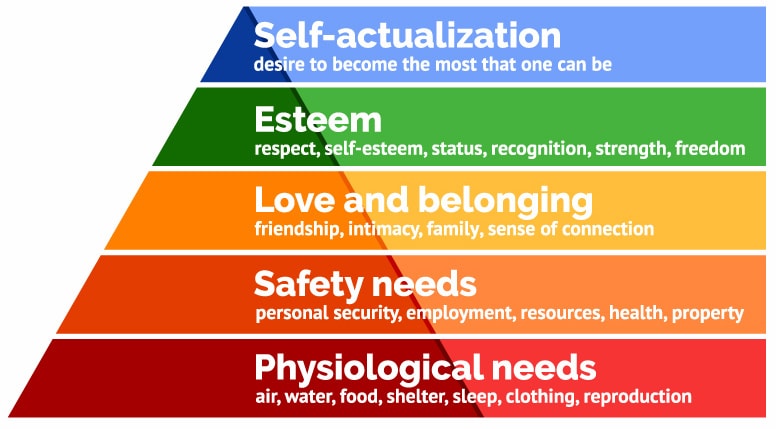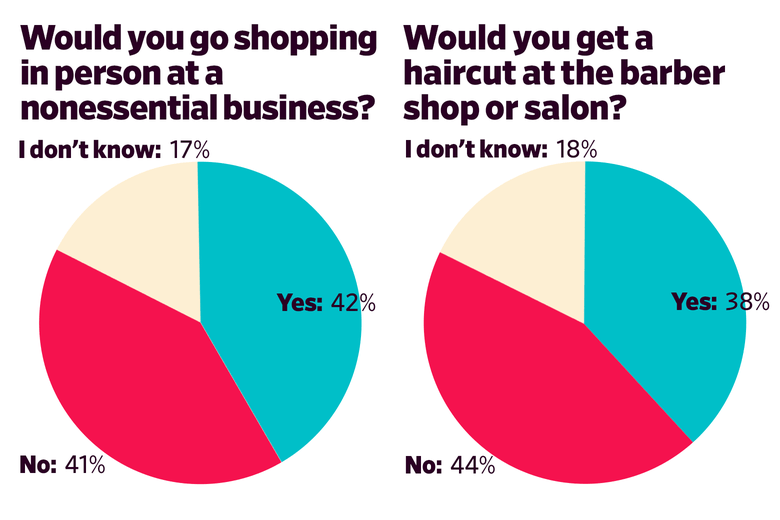Communicating Your Re-Opening Plans
Assuring Your Employees & Customers It's Safe To Return
What Is Your Re-Opening Plan?
Major League Baseball recently sent a massive 67-page medical and safety protocols document to its player's union to consider for re-opening the baseball season. The Athletic reports:
The operations manual for the abbreviated 2020 season, a copy of which was obtained by The Athletic, covers medical and testing protocols for COVID-19, spring training, facility protocols, on-field operations, league operations and transactions, travel, and player and staff education.
While there will be plenty of criticism of the proposal, the document does provide the first publicly-available concrete plan to re-open an industry and it highlights some of the complexities involved in re-opening safely.
Two Essential Elements
Though most businesses will not have nearly as complex considerations to re-open as professional sports would, every industry will have to address two essential elements when re-opening:
- The safety of your employees, and
- The safety of your customers.
That's it. With just two elements, it may seem simple, but there is a lot to consider.
The Safety Of Employees
Many businesses have discovered that they can be just as efficient and productive with a remote workforce as they were pre-pandemic. But obviously, not all businesses have that luxury.
Those companies that need employee in-person attendance to operate will need thoughtful, detailed plans and procedures to ensure their safe return. A Slate survey of more than 6,000 of their readers found that 43% would not return to their office, if allowed and another 20% were not sure if they would.
While your plan will likely need not be as comprehensive as Major League Baseball's 67-page tome, there will still be many questions for which you will need answers.
- How are you reconfiguring the workspace to allow for social distancing?
- Will employees be provided protective equipment like masks, face shields or gloves?
- What will be sanitized, how will it be sanitized, and how often?
- What are the procedures for ensuring the bathrooms remain safe?
- How will visits from vendors or customers or clients be handled?
- Will there be training for the new procedures and how will compliance be ensured?
Each business will have its own unique safety needs to be addressed and challenges to be overcome, one of the biggest of which will be convincing employees it is safe to return. That requires thoughtful policies but also clear, direct commuication.
Lastly, the procedures you have (or do not have) in place for your employees will not be lost on your customers, clients, or the general public. Getting your re-opening safety protocols right is not just the first step in convincing your employees to return, it's also a reputation management and public relations issue.
The Safety Of Customers
Chipotle & Consumer Psychology
I ordered a burrito from Chipotle yesterday. You place your order on the restaurant's website and then you can have your food delivered or you pick it up yourself. My Chipotle is just down the block, so I pick my orders up.
For pickup orders, they place your food on a pickup shelf inside the restaurant, so you can grab and go.
Aside: For some reason I don't understand, Chipotle is allowing customers to walk in off the street and place orders to go...and then hang out in the restaurant while their food is being prepared, many of whom are not wearing masks. Seems counter to best practices to me.
Anyway, I arrive to pick up my order and notice that while all the employees are wearing masks and gloves, one employee in particular is wearing her mask so that it covers her mouth but not her nose.
So she's standing there, hovering over the food as it's being assembled, and in my mind's eye I see her with thermal sight and a big green cloud of COVID-19 billows from her nose and onto the food below with every exhale. Sure, she looks asymptomatic, but I don't know if she's carrrying.
To make matters worse, while I'm waiting, she lifts her mask from her face to bark out an order to a fellow employee, completely defeating the purpose of the mask.
I tell this story because it is an example of the nature of consumer psychology at this point in time.
Mark Shaefer wrote an insightful piece about just this point, arguing that consumers are focused on the bottom layers of Abraham Maslow's Heirarchy of Needs in the midst of this pandemic that threatens both their physical as well as their economic security.

With a handful of states allowing businesses to re-open (my own state, Minnesota, has relaxed stay-at-home orders to allow another class of businesses to open starting today), it remains to be seen how consumers will respond.
What is clear is that they will be making calculations about what risks they are willing to take and what risks they will not take. The aforementioned Slate survey highlights consumers' concerns.
Everyone needs to eat, so grocery shopping is a risk most everyone is willing to take; in person, if need be but by delivery, if possible.
But they will make different calculations for non-essential businesses.

Retail Malls
The Mall of America will be re-opening for retail stores on June 1st. MoA is a fantastic Minnesota institution and international brand, so it should not be surprising that the Mall has developed a thoughtful, detailed, and comprehensive re-opening plan.
I trust the Mall of America to re-open responsibly and to execute its thoughtful and considered plan flawlessly.
But what don't trust is the customers.
Mall of America's plan requires customers to maintain physical distance from one another, to use masks in certain situations like standing in line, and to use hand sanitizer before interacting with electronic kiosks. How will that be enforced?
The Mall of America is vast. Even if the location operates at 50% capacity, that's still room for a lot of people And the more people you invite, the more idiots come with them.
Sporting Events & Concerts
With the exception of perhaps young people, most consumers have little desire to attend large scale gatherings such as concerts sporting events.
I am a huge baseball and football fan. Believe me, I desperately need to watch some Twins and Vikings games. But there is no way you could get me in a sporting venue with thousands of other fans. I attended nearly every Vikings home game last season but the only thought of 70,000 screaming purple warriors evokes is that of a coronavirus accelerant on steroids.
Major league sports get that, which is why every sport plans to re-open without fans. And that will remain the case until an effective vaccine is widely available.
Fitness
I have a membership at our local community center that gives me access to fitness ammenities such as the swimming pool, excercise equipment, the basketball courts, racquetball courts, and walking track. The center is closed and has yet to give notice of when it will re-open.
But at this point, the only thing I would feel comfortable using is the thing I originally signed up for, racquetball. The courts are self-contained, so it's a controlled environment, and I would be happy bashing the ball against the wall with just myself and no competition.
Listening
As you develop re-opening plans, it would be wise to solicit both your employees and your customers or clients about their concerns. This will help you identify issues you may not have considered and it will also signal that you are taking your employees' and your customers' safety seriously.
Communicating Safety
Developing a well-crafted plan of action for implementing safety procedures is the first step.
The next step is communicating your plan convincingly.
The Mall of America serve as excellent examples of how to do it by posting a detailed and continually-updated document on its website and social media channels.
We're excited to announce our retail stores will reopen with limited hours beginning June 1. Our restaurants + attractions will remain closed at this time. We look forward to seeing you again! For more info, visit https://t.co/8J1fICtwzJ pic.twitter.com/1rmgedQQjL
— Mall of America (@mallofamerica) May 14, 2020
Punch Pizza sent an email to customers listing six steps the restaurant planned to implement upon re-opening:
- Our dining room space has been redesigned for safe customer pick-up by removing seats and tables, creating adequate spacing for social distancing. We will have clear signage in the store for how to pick up your order to make it easy to get in-and-out. Our patios will be setup if you'd like to eat your takeout outdoors.
- We've instituted daily employee wellness checks including temperature checks for every employee before they clock-in, so that no employees will work while sick.
- Our staff will wear PPE at all times.
- We're offering 3 ways to order takeout; including online ordering, assisted online orders through a central phone bank, and in-store ordering at all locations. Delivery will soon be available for orders placed on our website.
- We've made an investment in a custom capacity system which offers more distinct online order pick-up times and balances our oven volume to reduce overcrowding in the restaurant at pick-up times.
- We've limited our hours (11am-8pm, Monday-Saturday) so we can be sure the restaurant is cleaned and sanitized properly; including being closed on Sundays for extra precaution.
Where's The Spoken Word?
While these examples hit all the right notes and cover all the bases in communicating to the public at large and customers in particular, the written word can only convey so much.
What I haven't seen is an owner or company spokesperson explaining re-opening plans in their own words, with their own voice. There is nothing like hearing or seeing such commitments to safety from the very top, from the voice of the owner or those who are accountable.
Such a video testimony would convey the that they are owning the plan, which in itself, would go a long way toward establishing the trust customers will need to be assured of their safety.
